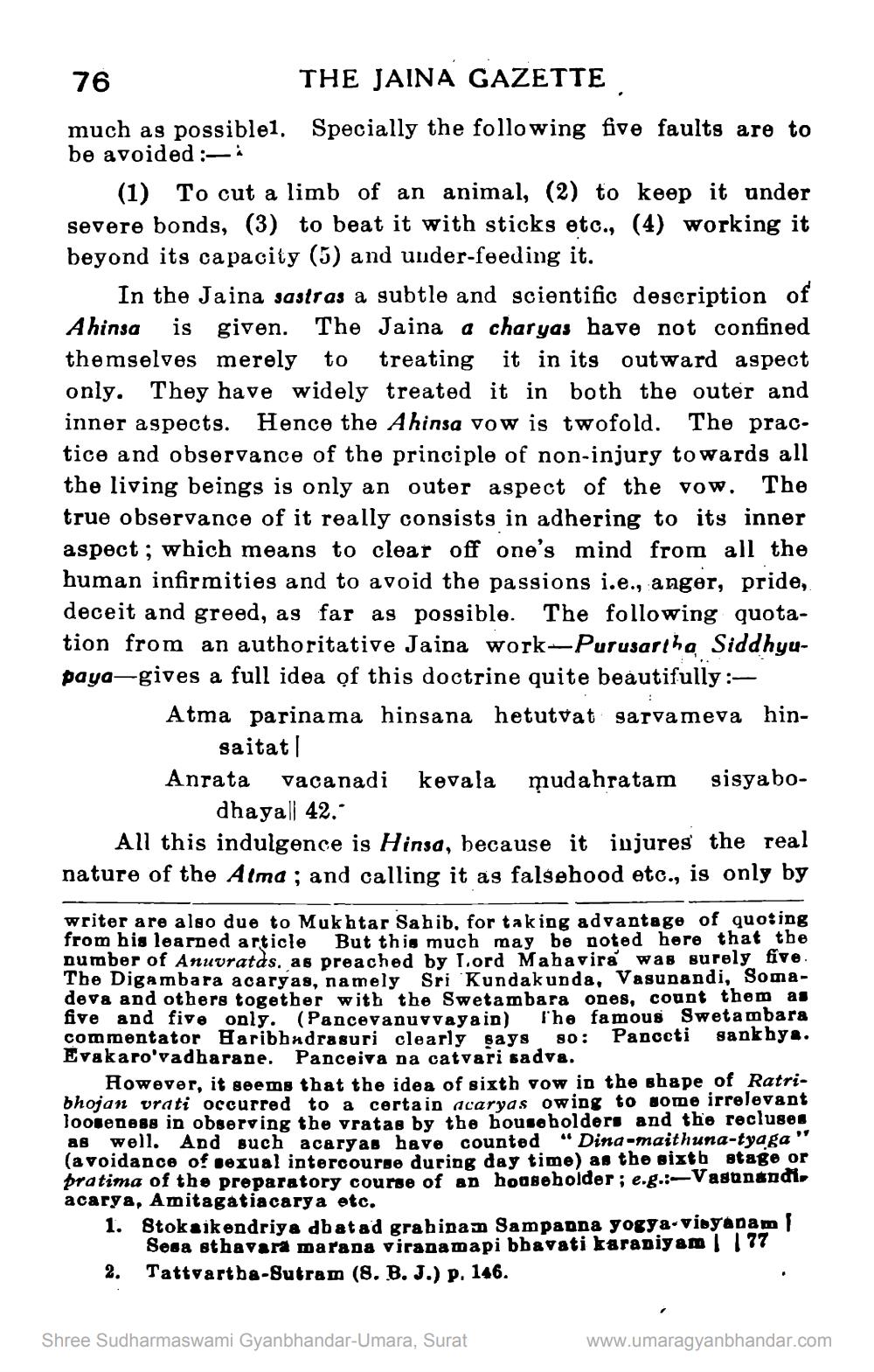________________
76
THE JAINA GAZETTE much as possible1. Specially the following five faults are to be avoided :-*
(1) To cut a limb of an animal, (2) to keep it under severe bonds, (3) to beat it with sticks etc., (4) working it beyond its capacity (5) and under-feeding it.
In the Jaina sastras a subtle and scientific description of Ahinsa is given. The Jaina a charyas have not confined themselves merely to treating it in its outward aspect only. They have widely treated it in both the outer and inner aspects. Hence the Ahinsa vow is twofold. The practice and observance of the principle of non-injury towards all the living beings is only an outer aspect of the vow. The true observance of it really consists in adhering to its inner aspect; which means to clear off one's mind from all the human infirmities and to avoid the passions i.e., anger, pride, deceit and greed, as far as possible. The following quotation from an authoritative Jaina work-Purusartha Siddhyupaya-gives a full idea of this doctrine quite beautifully :
Atma Parinama hinsana hetutvat sarvameva hin
saitat | Anrata vacanadi kevala mudahratam sisyabo
dhaya|| 42. All this indulgence is Hinsa, because it injures the real nature of the Alma; and calling it as falsehood etc., is only by
writer are also due to Mukhtar Sahib, for taking advantage of quoting from his learned article But this much may be noted here that the number of Anuvratds, as preached by Lord Mahavira was surely five. The Digambara acaryag, namely Sri Kundakunda, Vasunandi, Somadeva and others together with the Swetambara ones, count them as five and five only. (Pancevanuvvaya in the famous Swetambara commentator Haribhndrasuri clearly says 80: Panceti sankhya. Evakaro'vadharane. Panceiva na catvari sadva.
However, it seems that the idea of sixth vow in the shape of Ratribhojan vrati occurred to a certain acaryas owing to some irrelevant Jooseness in observing the vratae by the householders and the reclusos as well. And such acaryas have counted “Dina -maithuna-tyaga" (avoidance of sexual intercourse during day time) as the sixth stage of pratima of the preparatory course of an householder; e.g.:-Vasanandi, acarya, Amitagatiacarya etc. 1. Stok aik endriya dbatad grabinan Sampaona yogya.vidyanam
Sesa sthavara marapa virana mapi bhavati karabiyam 177 2. Tattvartba-Sutram (8. B. J.) p. 146.
Shree Sudharmaswami Gyanbhandar-Umara, Surat
www.umaragyanbhandar.com




